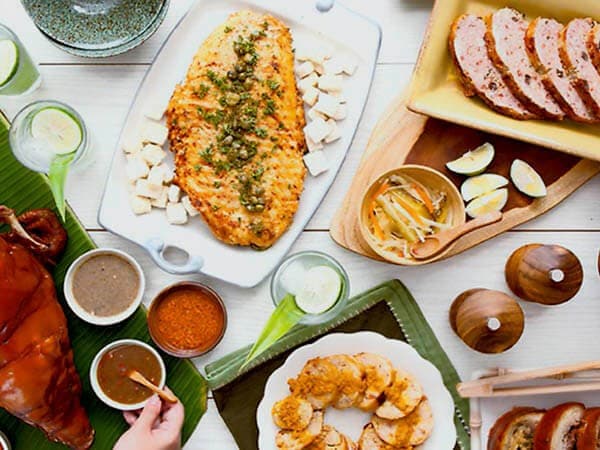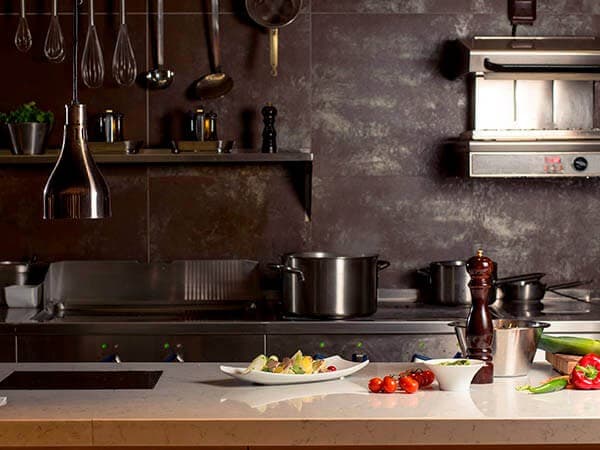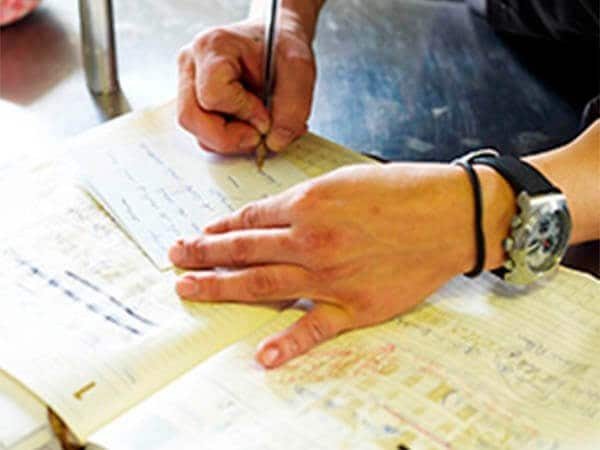How many of you have had this moment? You’re eating at a restaurant, watching a cooking show, or browsing Instagram, and you start wondering how to start a business from home. You’re not alone. Throughout the pandemic, the world saw a spike in fully remote food businesses. Social media feeds overflowed with ads of home-based ventures offering everything from indulgent desserts to savory lunch sets.
Instagram, Facebook, and Viber have become everyone’s go-to platforms for figuring out what to eat next. Just by filling out an order form, paying online, and booking a delivery rider, customers get a new dish to try almost instantly!
But is starting a food business from home really that simple? What does it take to go from having a brilliant idea to fulfilling orders and keeping customers happy?
Here, chefs Brando Santos and Paulo Sia of the Unilever Food Solutions culinary team share the secret ingredients to becoming a true and successful food business owner. Consider this your expert-approved checklist for starting. Once you’ve ticked all the boxes, it’s time to turn up the heat in your home kitchen!

1. Know Your Concept
First off, you need a solid food business concept. Let your imagination run wild – think up what the next best thing could be and what will get you excited to start.
“It’s the motivation behind why you’re starting your business,” says chef Brando. After jotting down multiple ideas, trim the list. Stick to something you’re capable of doing and something feasible in the long run.
“The concept determines the longevity and the acceptance of your restaurant,” he explains. When coming up with your concept, several questions need to be considered, including:
- What cuisine do you want to offer? Is it purely Filipino, Western, or a fusion?
- What cooking or baking methods are you most confident in?
- What ingredients do you want to use? Where will you source them?
- Who do you want your customers to be? What are their preferences?
- What will you call your business? Is it original and easy to remember?

2. Evaluate Your Setup
With your concept sorted out, it’s time to think about the operations side of your start-up. While running a food business at home seems convenient, it still poses a few challenges you should prepare for. So, evaluate your space and think of its fitness for different scenarios.
For example, during the busy holiday season, will you have enough space to accommodate a sudden influx of orders? Begin designing the flow of your kitchen to make prepping, cooking, and dispatching more efficient
Then, look at the equipment you have. Your kitchen appliances are most likely for home and not commercial use, so they may have limited capacities
But when it comes to buying new equipment, chef Pau advises: “Don’t invest in equipment right away. When you eventually start your business, try accepting a few orders first to assess how your operations will go. From there, you can tweak your system, add more equipment, and maybe even get a hand or two to help you out when things get busier!”

3. Find the Right Suppliers
To bring your business to life, you need food. Finding the right partners is vital to ensuring your business runs smoothly. Once you’ve pinned down your concept and figured out your setup, begin searching for suppliers.
This step could take a while because you’ll need to test each ingredient and determine if they fit your needs. Taste, quality, and affordability are top considerations.
And when you have your must-have ingredients lined up, you should also start thinking of ways to maximize them. If you decide to add more menu items, try to reuse components to minimize costs. For quality, cost-efficient products you can buy in bulk, check out the wide range of products offered by Unilever Food Solutions.
Ingredients from iconic brands like Knorr Professional and Lady’s Choice are versatile enough for various recipes. But they’re also still delicious enough to make your food stand out.
When coming up with your concept, there are several layers that need to be considered. First, what kind of cuisine would you want to stick to? Is it purely Filipino, Western, or even a fusion? Second, what kind of cooking or baking are you most confident doing? Chef Brando also adds, "The concept is what determines the longevity and the acceptance of your restaurant."
As a hypothetical example, let’s assume that you enjoy cooking Filipino food. From there, the third consideration would be which cooking method you are most comfortable with. Is it frying, roasting, or smoking? Once you’ve figured that out, the fourth point would be the kind of ingredients you want to use. Will you be cooking with meat, seafood, vegetables, or all of the above? This part will be necessary when you begin sourcing your ingredients.
Your fifth consideration is how you can make your concept stand out from the rest. Think about who you want your customers to be and what their preferences are.
Lastly, what will your business be called? Make it original and easy to remember!

4. Compute Your Costs
Some assume that home-based food businesses have low capital requirements. “If you’re doing this out of passion, you still have to fund the project,” says chef Brando. Before accepting orders, you need to stock up on ingredients and packaging requirements. You also need to account for added electricity and water consumption. Consider all these factors when costing your offerings.
Not sure how to price your dishes? Check out Unilever Food Solutions’ cost management module. It’ll teach you how to price your menu items and earn a profit. Plus, learn which ingredients to source, how to maximize them, how much your markup should be, and more.

5. Establish Your Brand Online
Once you’ve done your taste tests, finalized your operations, and fixed your costs, you can finally plan your big launch. Building a solid brand is key to making your business memorable. Establish your identity through mouthwatering food photography, social media content, and seamless branding. Don’t forget to create a logo that encapsulates your business’ essence.
- If your budget permits, hire a professional photographer to capture your dishes. If not, you can always do it yourself. At least you can take as many pictures as you want!
- Your social media pages can also serve as your platform for taking orders. Make sure your menu is accessible and the form is easy to fill out.
- Don’t forget reviews! Whenever a customer posts good feedback about your dishes, reshare them or create posts based on what they say. If you ever receive complaints, remember to listen to your customers and see how you can improve your food or service.
Learning how to start a food business from home may be daunting, but following these five steps will put you on track to success. Keep all of this expert advice in mind, and you can thrive in your new venture. Good luck with your endeavors!
Unilever Food Solutions provides commercial-sized products from well-loved brands like Knorr Professional and Lady’s Choice. But apart from offering ingredients, the website contains helpful resources and recipes that food businesses of all sizes can learn from. Subscribe to the Unilever Food Solutions newsletter to receive industry-related content in your inbox.

